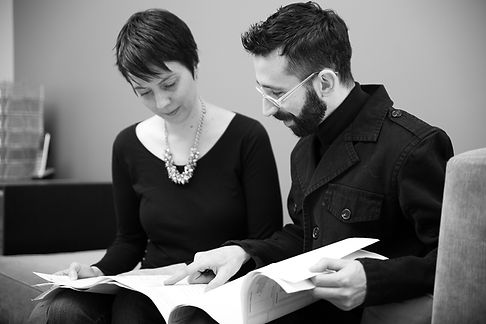Design Therapy


What do we mean by Design Therapy? Good design solves functional and aesthetic problems; great design also resonates psychologically. For our principal, Daniel Ian Smith, growing up in a family of social workers, he learned early on how to talk about feelings and emotions. As a designer, clients were constantly remarking that Daniel’s empathic nature and patient guidance made them feel like they were going through “design therapy,” and the dramatic results felt like a breakthrough for client after client. Over time, Village West Design has embraced this therapist characterization of our work...
Simply put: we leverage the power of design to make people happy in their homes.
One cannot overstate the restorative power of a house that supports its inhabitants. There’s a reason that shelter is defined as a basic need. It offers so much more than simple protection from the elements. It can make us feel secure, inspired, proud, joyful, replenished, content. A home that meets our individual needs provides reassurance, safety, and a sense of belonging. All of these are important for mental health and emotional well-being.
At Village West Design, we follow a number of Design Therapy practices as we progress from initial consultation to project completion:
-
Instead of focusing on the physical space for each new project, at Village West Design, we center the individual homeowner and focus on identifying their unique personality, tastes, and goals.
-
During the intake process, we ask about functionality and aesthetics, but we also ask how the spaces make you feel. Actually, we ask how you *want* to feel, and that provides us key information about which interventions are needed.
-
One of several controversial opinions we hold is that it is not necessarily the client’s responsibility to articulate their style or taste. It’s not even their responsibility to fully understand what makes them happy. As design professionals, it's our job to carefully observe and to ask the right questions in order to devise a space that's the perfect fit for you.
-
Clear communication between the client and the designer is tantamount to success. We work to establish trust and connection early on, and we are compassionate listeners.
-
We meet the clients where they are as far as understanding design concepts, and we make sure to explain the psychology behind particular design proposals. Even when a client has an immediate positive reaction, it can be reassuring to know why a solution appeals and how it satisfies the overall project goals. This also helps clients better understand what they need from their homes in order to be happy living in them.
-
We combine our design knowledge with an acute sensitivity to the psychology of spaces and create solutions that are catered to each project space and individual client.
-
As we all do when confronted with challenges, clients might struggle along the way, lose sight of the bigger picture, or be motivated by unconscious fears. As experts, we must sometimes gently remind clients of their own goals and ensure the process keeps moving forward.
-
"Couples therapy" involves a special subset of steps designed to ensure communication not just between client and designer but also between the clients themselves. For a home to be harmonious, everyone must feel a strong sense of belonging and participate in the intake process. Daniel pays particular attention to soliciting input from all parties, and he gently makes space for differing opinions. Even if Daniel’s conflict resolution and intervention training was not initially intended for design clients, he still draws on these skills to ensure a smooth process where everyone feels comfortable. Daniel and the rest of the Village West Design team work tirelessly to finesse design interventions so that they reflect and accommodate each person’s individual tastes.
Following these Design Therapy practices builds trust, opens communication, and points us down a path of functional and aesthetic, as well as psychological success for each project. After all, working on your home is a major undertaking, and it’s important to have a trusted partner and system. And, yes, as you might imagine, at some point during each project Daniel is sure to ask the client, “So, how does that make you feel?” ☺
